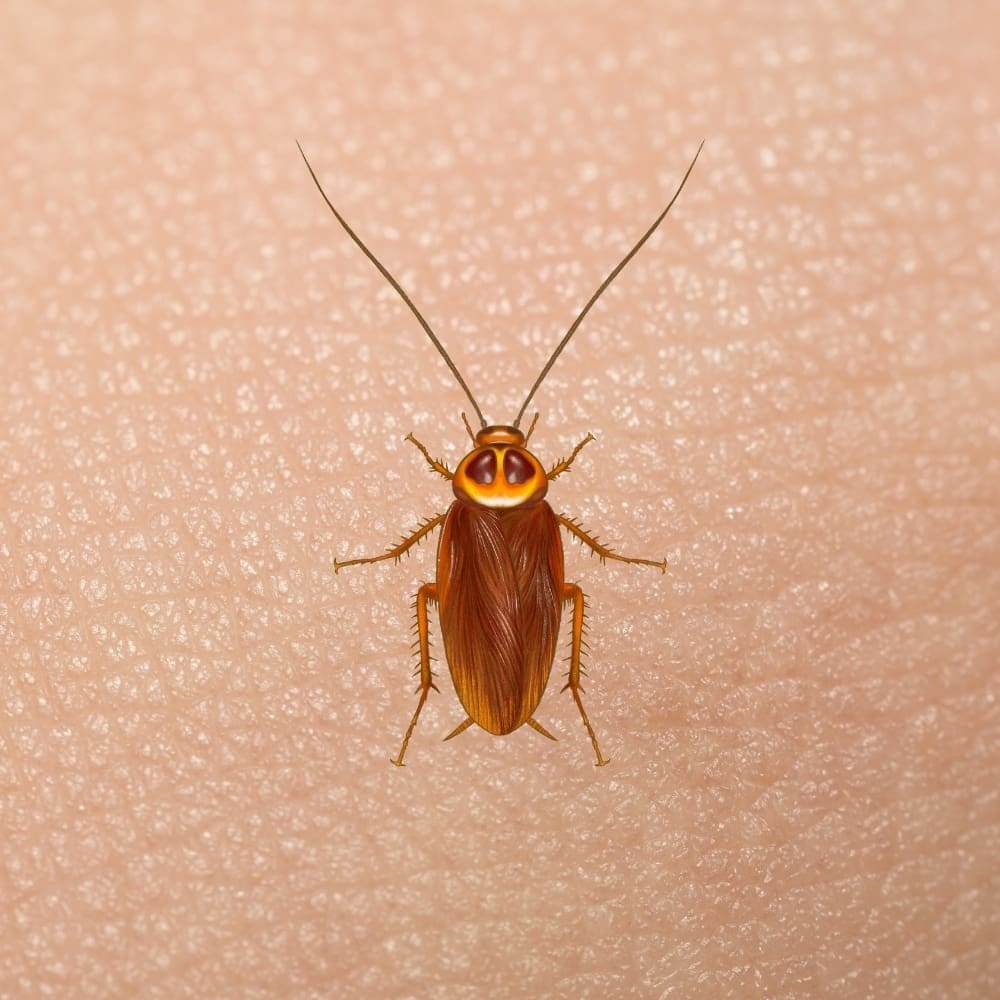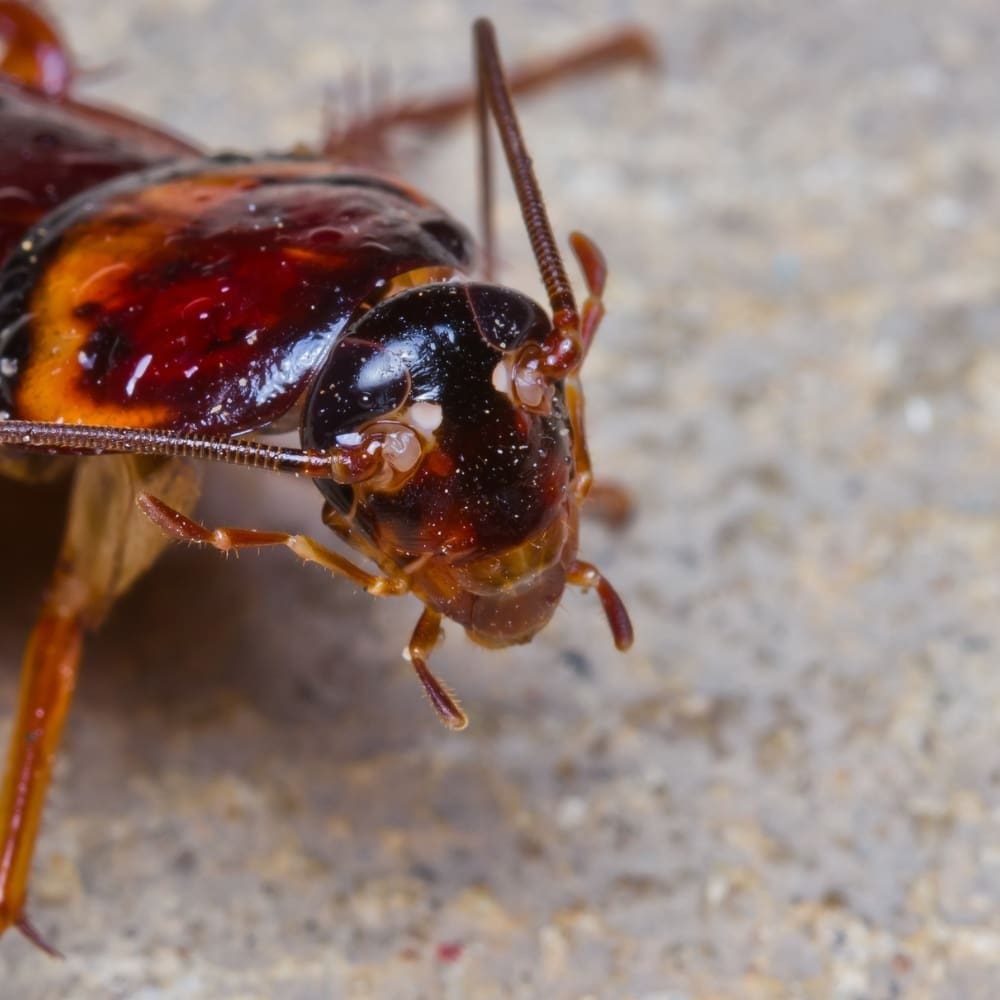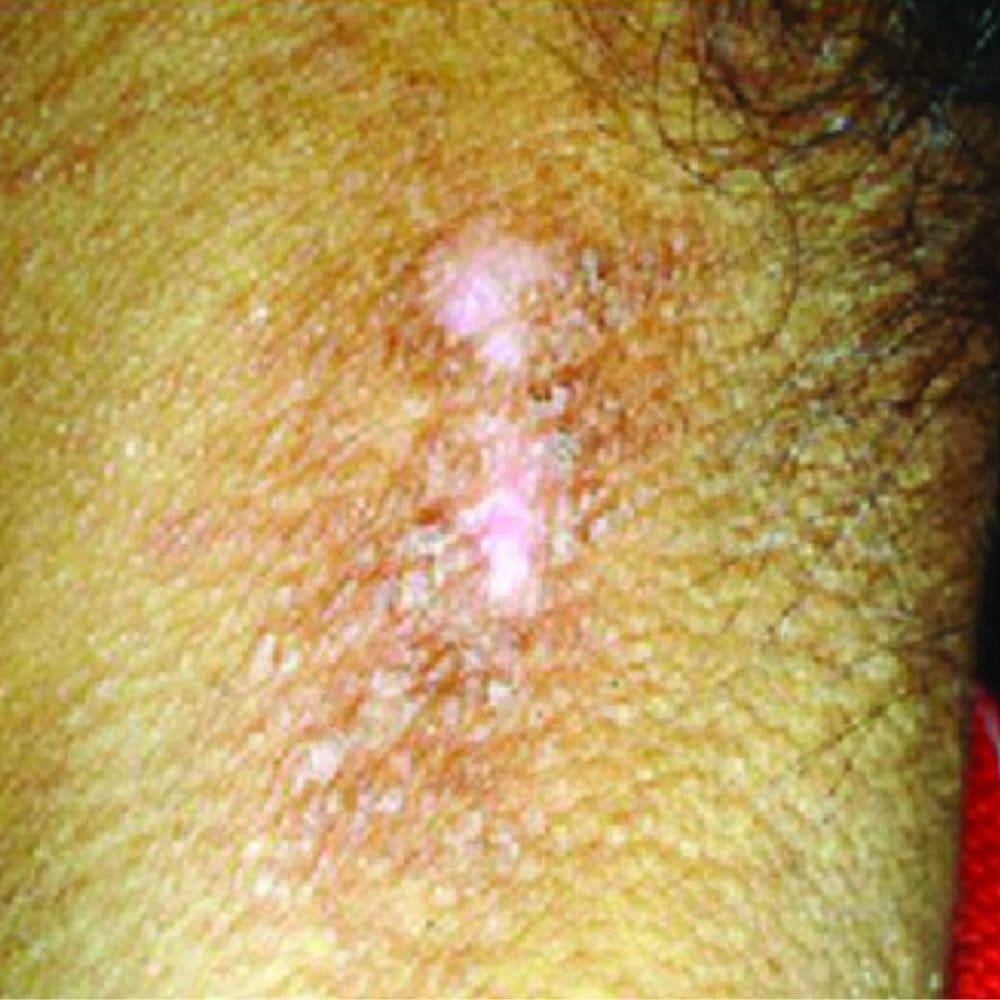Do Cockroaches Bite?
By:
Updated:


Cockroaches typically do not bite people unless extreme conditions like starvation or overpopulation force them to.
Cockroach Bites
Incidents of cockroaches biting people are rare. In fact, I’ve only heard of it happening a few times throughout my pest control career. In most cases, fear of cockroach bites stems from misunderstandings about these insects and their behavior.
Cockroaches typically avoid humans as much as possible. As scavengers, they don’t hunt for food or seek out hosts to parasitize. Biting also isn’t a natural defense mechanism for cockroaches as it is for other insects. However, it is possible in severe infestations when cockroaches are starving and overpopulated.
Mouthparts of Cockroaches
Cockroaches have primitive insect mouthparts for biting and chewing. They consist of mandibles, maxillae, labrum, labium, and hypopharynx.
The mandibles are essentially their “jaws”—made for cutting, crushing, and chewing food. These hard, bladelike structures protrude from both sides of the mouth and contain tiny “teeth” called denticles which interlock when the mandibles are closed. This allows them to gnaw through tough materials like wood and leather.1
One study found that the common American cockroach (Periplaneta americana) can bite with a force around 50 times its body weight, up to a maximum force of 0.5N.2 However, the force required for a needle to puncture skin is in the range of 1–10N.3 That means cockroaches are unlikely to penetrate skin if they were to bite a person.
That said, cockroach mandibles don’t work like needles, which puncture skin in one shot. Their function is to cut and grind repeatedly, which can break the outermost layer of skin and cause minor lesions or skin irritation.


Closeup of mouthparts; the mandibles are the blue structures (marked “md”). Image source: Weihmann et al. Fast and Powerful: Biomechanics and Bite Forces of the Mandibles in the American Cockroach Periplaneta americana (CC BY 4.0)
In What Situation Would a Cockroach Bite?
Cockroaches have a wide-ranging diet, which includes keratin from hair, fingernails, toenails, eyelashes, blisters, or skin. Most of the time, they feed on fallen hair strands, nail clippings, or dead skin on the floor. Rarely do they try to get them off a live person.
In extreme situations, such as when food options are scarce, cockroaches may try to approach people in their sleep. They are cases where cockroaches have been found nibbling on the eyelashes, fingernails, or callused skin of sleeping or sick persons. Other times, cockroaches might seem like they’re biting a person when in fact they’re just trying to pick at food remnants or grease.
In a severe and unchecked infestation, it’s possible that the cockroach population might be forced to change their feeding habits. For example, a scientific review by Roth and Willis (1957) describes severe infestations on ships in which famished cockroaches would gnaw on the fingernails and skin of sailors as they slept.4
What Do Cockroach Bites Look Like?
It’s important to understand how cockroach bites differ from most insect bites. Common biters like mosquitoes and bed bugs have piercing-sucking mouthparts that puncture skin and produce red, raised bumps. Cockroaches, on the other hand, have biting-chewing mouthparts that cut laterally, creating small lacerations or abrasions.
Depending on the situation, their bites might appear as small patches, lesions, abrasions, or areas of inflammation. A single bite may leave a mark between 1–4 millimeters long, based on how wide the mandibles can open. However, cockroaches tend to gnaw repeatedly while feeding, making it difficult to recognize.
The signs and appearance of bites also varies depending on the species. According to entomologist Josh Shoemaker, bites from Oriental cockroaches have been documented to cause inflammation and necrosis, while bites from German cockroaches may cause crusted ulcerations, scarring, and skin discoloration.5

Skin erosion caused by cockroach bites on an indigenous child. Image source: Vidal Haddad Junior. Lesions caused by human and domestic and wild animal bites (CC BY 4.0)
Conclusion
Cockroaches do not typically bite people, except in extreme circumstances resulting from starvation or overpopulation. In such cases, bites may occur on nails, hair, and callused skin, leaving behind small lesions or abrasions. However, documented cases are rare, especially in developed countries.
Most of the time, what people think are cockroach bites are in fact due to skin conditions, diseases, or other insects. Other times, cockroaches might be drawn to food residue, perspiration, or dead skin on a sleeping person, which can be mistaken for biting behavior.
If you’re concerned about cockroaches, the best thing to do is to clean, declutter, and remove potential food and water sources that attract them. Basic sanitation and pest management practices is often sufficient to prevent cockroach populations from reaching levels where they might bite people.

About the Author
References
- Wilson, E.O., Nalepa, C.A., Roth, L.M., & Bell, W.J. (2007). Cockroaches: Ecology, Behavior, and Natural History. Baltimore: Johns Hopkins University Press., https://doi.org/10.1353/book.3295 ↩︎
- Weihmann T, Reinhardt L, Weißing K, Siebert T, Wipfler B (2015) Fast and Powerful: Biomechanics and Bite Forces of the Mandibles in the American Cockroach Periplaneta americana. PLOS ONE 10(11): e0141226. https://doi.org/10.1371/journal.pone.0141226 ↩︎
- Van Gerwen, D. J., Dankelman, J., & Van Den Dobbelsteen, J. J. (2012). Needle–tissue interaction forces – A survey of experimental data. Medical Engineering & Physics, 34(6), 665–680. https://doi.org/10.1016/j.medengphy.2012.04.007 ↩︎
- Roth, L. M., Willis E. R., & Ley, H. L. (1957). The Medical and Veterinary Importance of Cockroaches. In Smithsonian Miscellaneous Collections (Vol. 134, Issue 10). https://repository.si.edu/handle/10088/22939 ↩︎
- Shoemaker, J. (2021, July). Do Cockroaches Bite?. Pctonline.com. https://www.pctonline.com/article/do-cockroaches-bite/ ↩︎


